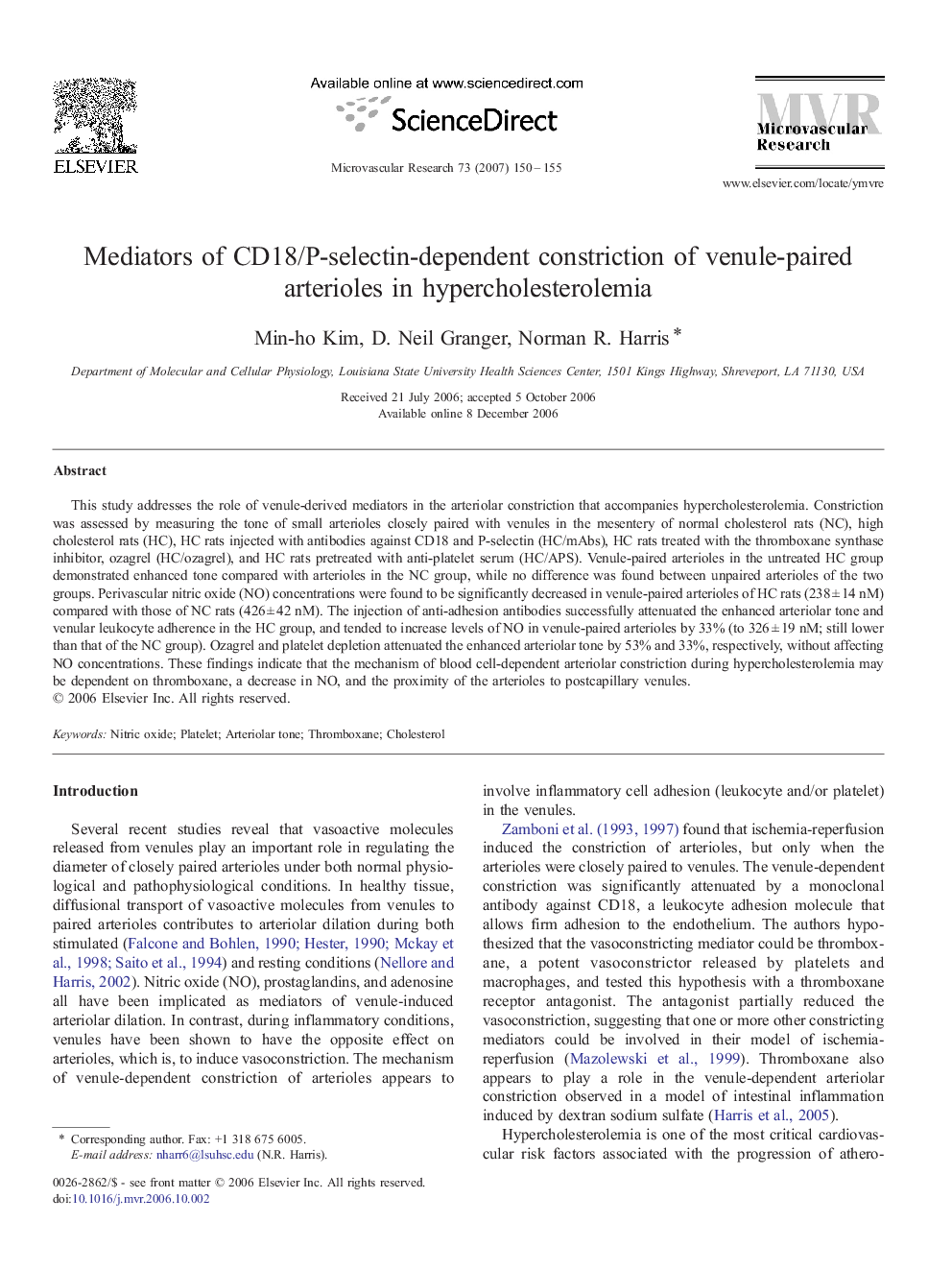| Article ID | Journal | Published Year | Pages | File Type |
|---|---|---|---|---|
| 1995536 | Microvascular Research | 2007 | 6 Pages |
This study addresses the role of venule-derived mediators in the arteriolar constriction that accompanies hypercholesterolemia. Constriction was assessed by measuring the tone of small arterioles closely paired with venules in the mesentery of normal cholesterol rats (NC), high cholesterol rats (HC), HC rats injected with antibodies against CD18 and P-selectin (HC/mAbs), HC rats treated with the thromboxane synthase inhibitor, ozagrel (HC/ozagrel), and HC rats pretreated with anti-platelet serum (HC/APS). Venule-paired arterioles in the untreated HC group demonstrated enhanced tone compared with arterioles in the NC group, while no difference was found between unpaired arterioles of the two groups. Perivascular nitric oxide (NO) concentrations were found to be significantly decreased in venule-paired arterioles of HC rats (238 ± 14 nM) compared with those of NC rats (426 ± 42 nM). The injection of anti-adhesion antibodies successfully attenuated the enhanced arteriolar tone and venular leukocyte adherence in the HC group, and tended to increase levels of NO in venule-paired arterioles by 33% (to 326 ± 19 nM; still lower than that of the NC group). Ozagrel and platelet depletion attenuated the enhanced arteriolar tone by 53% and 33%, respectively, without affecting NO concentrations. These findings indicate that the mechanism of blood cell-dependent arteriolar constriction during hypercholesterolemia may be dependent on thromboxane, a decrease in NO, and the proximity of the arterioles to postcapillary venules.
